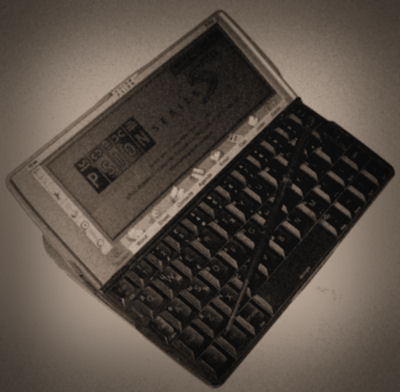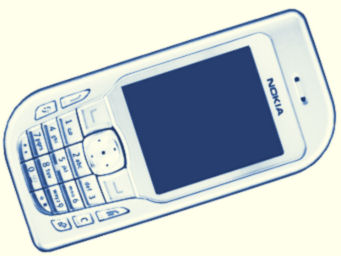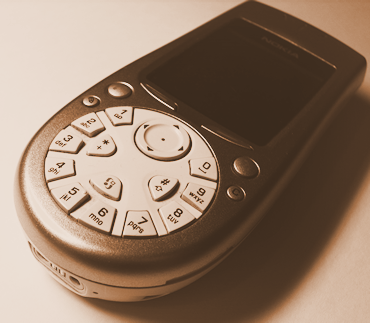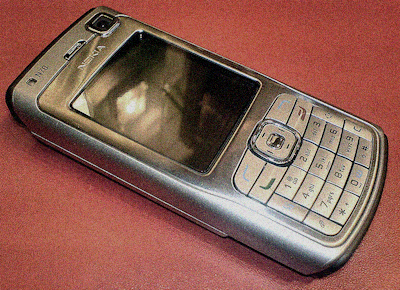Memory Lane, Part 1

If I had to guess, I suggest that very few readers of this blog would expect to come across a low quality image of an old Psion Series 5mx at the top of an article. Of course, we should never forget that Symbian, at the heart of so many modern Nokia devices, has its roots in the EPOC operating system running on the Psion palmtop devices, and that’s where this article begins. But first, a little about me…
I’m Andy Harsent, a self-confessed mobile geek from the south-east of the UK and one of Jay’s newest additions to his team here at My Nokia Blog.
In the future, I plan to bring a number of small tricks, tips and ideas for N900 users out there that may have been otherwise missed or overlooked, including drawing attention to web sites that function as excellent web applications for the device thanks to its similarly excellent web browser.
For now though, I thought I’d start with a trip down memory lane to offer some background for my experience with Nokia devices, taking a look at some of the specifications and features of devices I’ve owned and used, and how times have changed over the years to where we are now. As an added treat, I’ll throw in some images that look like successively less ancient photographs
 As an owner of a Psion Series 5 over a decade ago, I was only too glad to drop my Philips C12 in favour of a device that combined what I loved about Psion’s EPOC operating system (now called Symbian) with a mobile phone in the form of the Nokia 9210 Communicator. While a sizable brick by phone standards, it was more compact than my Series 5. Let’s take a look at a few of the numbers…
As an owner of a Psion Series 5 over a decade ago, I was only too glad to drop my Philips C12 in favour of a device that combined what I loved about Psion’s EPOC operating system (now called Symbian) with a mobile phone in the form of the Nokia 9210 Communicator. While a sizable brick by phone standards, it was more compact than my Series 5. Let’s take a look at a few of the numbers…
| Released | 2000 | |
| Processor | 52MHz | |
| OS | Symbian 6.0 (Series 80) | |
| Dimensions (mm) | 158 x 56 x 27 (238,896 volume), 244g | |
| Storage | 2Mb + MMC (commonly 16Mb) | |
| Camera | None | |
| Battery | 1300 mAh | |
| Screen | 640 x 200, 4096 colours, 4.5″ | |
| Connectivity | 2G |
The 9210 was perhaps noteworthy for its Office suite that could quite happily work with Word and Excel files and its full VGA web browser (not just WAP, as was becoming commonplace at the time). For anyone note aware of the form factor, as pictured it was designed to fold open to reveal a full qwerty keyboard.
Nokia would later release the 9500 Communicator to replace the 9210, but by then I’d come to the conclusion that bigger wasn’t necessarily better, and I actually needed a phone to be a phone first, geek toy second for a while. The folding form factor had become less trendy, and smaller handsets were where companies were focussing development. So, to stay on the cutting edge, I upgraded to a Nokia 3650. Not being an experienced user of T9 predictive text on a ‘normal’ phone , the unusual layout of the keypad didn’t phase me. Let’s see how it compared to the 9210…
| Released | 2002-3 | (+2 years) |
| Processor | 104MHz | (+52MHz, or x2) |
| OS | Symbian 6.1 (Series 60 1st Edition) | |
| Dimensions (mm) | 130 x 57 x 26 (192,660 volume*), 130g | (-46,236 volume, -114g) |
| Storage | 4Mb + MMC (commonly 16Mb) | (+2Mb internal, same for MMC) |
| Camera | 0.3MP | |
| Battery | 850mAh | (-430mAh) |
| Screen | 176 x 208, 4096 colours, 2.1″ | (much lower resolution, -2.4″) |
| Connectivity | 2G |
*The 3650 is a long way off actually being rectangular, so the true volume would be less
Of course, a smaller phone means that a lot of the numbers are smaller. Gone was the full Office suite of applications, as to be expected with no keyboard. However, with Nokia’s Series 60, Symbian’s community of software developers really got going. Themes, games and other software became readily available very quickly. Symbian really began to show some strengths with the early devices in terms of battery life – there was quite a bit of power in these early handsets (certainly compared to competition), and yet they tended to still go for days between charges.
Of course, not one to stand still, my contract came for upgrade in 2004, just around the time that the Nokia 6670 became available sporting the next version of Symbian.
As a small interlude here, I feel it worth drawing attention to memories of these Symbian phones being criticised for their size compared to other phones that fit in the palm of your hand. A definition for ‘smartphones’ wasn’t really around back then, though that’s what Symbian devices really were from day one, and as such most criticism came from comparing them to everything else at the time.
 So, back on track, let’s compare the 6670’s numbers to the 3650…
So, back on track, let’s compare the 6670’s numbers to the 3650…
| Released | 2004 | (+2 years) |
| Processor | 123MHz | (+19MHz, or x1.18) |
| OS | Symbian 7.0 (Series 60 2nd Edition) | |
| Dimensions (mm) | 109 x 53 x 21 (121,317 volume), 120g | (-71,343 volume, -10g) |
| Storage | 8Mb + RS-MMC (commonly 64Mb) | (+4Mb internal, +56Mb for MMC) |
| Camera | 1MP | (+0.7MP) |
| Battery | 900mAh | (+50mAh) |
| Screen | 176 x 208, 65k colours, 2.1″ | (same resolution/size, more colours) |
| Connectivity | 2G |
More evolutionary than anything else, the biggest difference about the 6670 (and its predecessor, the 6600) compared to the 3650 was that it had a normal keypad – which resulted in a lot less thumb cramping trying to press the ‘7’ key.
It wasn’t long into 2005 before Nokia announced their new NSeries range of devices, billed as phones with superior multimedia capabilities. In 2005 this didn’t really mean that much by PC standards, but they did offer a more capable camera and a bit more processing power. Working to a budget at the time, the N70 was my next handset of choice…
| Released | 2005 | (+1 year) |
| Processor | 220MHz | (+97MHz, or x1.79) |
| OS | Symbian 8.1 (Series 60 2nd Edition FP3) | |
| Dimensions (mm) | 109 x 53 x 22 (127,094 volume), 126g | (+5,777 volume, +6g) |
| Storage | 32Mb + RS MMC (commonly 64Mb) | (+24Mb, same for MMC) |
| Camera | 2MP | (+1MP) |
| Battery | 970mAh | (+70mAh) |
| Screen | 176 x 208, 256k colours, 2.1″ | (same resolution/size, more colours) |
| Connectivity | 2G, EDGE, 3G |
Phones of the time certainly couldn’t manage playback of videos larger than those it recorded itself, and music playback was a little touch and go. However, the addition of a front-facing camera and 3G connectivity for video calling, along with a better rear camera with a flash, GPS, and so on, pushed the device into a new class. Finally mobile devices were gaining enough power and features that they were setting themselves completely apart from the ‘dumbphones’.
I’ll stop there for the moment. In the second half of this ‘brief history of me and my mobiles’, I’ll take a look at the second half of the decade, and how specifications developed in Nokia devices up to 2010.







Connect
Connect with us on the following social media platforms.